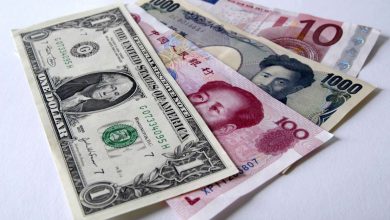The MegaBulk Stock of GT. Bank

Guaranty Trust Bank Plc ,no doubt, is one of the major targets of the stock investors for mega bucks . And for this , it remains their sure haven of investments . Overwhelmed and excited by its howling performance in the market recently, some investors simply tagged the stock a recession proof ; but most importantly , the excitement is out of the belief that it delivers mega bulk. .
Truly , they are not driven by fantasy. GT stock is among the few stocks that could translate the destiny of a sagacious investor from penury to affluence overnight. In the last one year ,its price per share oscillated between N16.7 and N38.50 .That translates to 130.5 percent returns .Within a month it delivered 23.39 percent return .Its 7 days return was 8.7 percent and one year return was 44.3 % .
Within that one year period GT Bank’s market capitalization also hit a milestone . It stands at 1.07 trillion last week at the current price of 36.40 per share with outstanding shares of 29.43 billions compared to N 491,4818nillion at a price of 16 .7 with the same outstanding share number a year ago ..By the above ,the bank has gained N490.41 billion within a year .The continuous and impressive upswing in the price of GT Bank’s share price underscores investors and analysts belief in the growth potential of the bank .Investors are not fools . It was not a knuckle of luck . The bank’s fundamentals and investors’ sentiment are the powers behind it
Moreover , Guaranty Trust share price has been adjudged by analysts to be less volatile than 75 % of the stocks on the Exchange and has been stable over the past one year on weekly basis.
The bank’s PE ratio of 5.68 times multiples indicate that investors are willing to part with more to own its stock. Moreover, its Earnings Per Share at N6.46 is a demonstration of a strong earnings power. It is difficult not to do so since delivered high returns on equity, assets and capital over time .
Its shareholders returns on weekly ,yearly and over five years duration have been its beauty that attracts attentions of investors. It outperforms the industry’s 23.2 % with its 25percent one year return and its 68.6 percent return stands above the industry and market returns of 43.5 % and 0.04 percent respectively.
With its Price to Book ratio of 1.2x as against the industry 0.5x and the market 0.7x shows its share is selling at premium.
Asides its rich potentials for capital gains, investors are equally excited by the bank’s dividend payment tradition With its dividend paymentsout at 41 percent payout to shareholders and the fact that its dividends have increased in the last ten years, GT Bank’s stock remains the cynosure of the existing and potentials investors .Its current dividend yield of 7.72 % is in line with the industry average but higher than the bottom 25 % dividend payers .
The bank is already outperforming the analysts forecast future Return on Equity of 24 percent for three years time . Its earnings and revenue are forecasted to grow annually at 3.8 %and 6.8 percent respectively. Though its EPS as at June ,30th this year was N6.783 ,analysts forecast shows it is likely to stay between N6.966 and N7.000 by December, 2020 .
This may not be farfetched as its past performance was highly competitive .GT’ s current profit margins at 51% is the best among its peers and the quality of its earnings is outstanding. Moreover, ,its ROE at 26.6 percent and ROA at 4.2 % outperformed both the industry at 12.1 % and 1.1 % respectively. Its debt to equity at 63.4 is good for a bank like that is highly efficient and well capitalized.
Moreover, its assets to equity at 6.3 times multiple, which represents how much it is financing its operations through debt versus its wholly owned fund is considered low and less risky by analysts. .
This is more so with the bank’s low risk liabilities at 81 percent as a source of funding in addition to its loan to assets ratio of 36percent and loan to deposit ratio of 53 % ..
GT Bank is a market leader in its own right and arguably the most efficient bank in Nigeria . This is manifested in its cost management .
GT Bank Plc, a Nigerian first tier lender, sustained its efficiency leadership in the first half of 2020 recording the least costs to income ratio , a yardstick of efficiency..
The bank recorded a 43 % cost to income ratio followed by StanbicIBTC bank with 45.2 % while Zenith Bank came third with 54.2 %. Over the past three years GT Bank, Zenith Bank, and UBN have consistently reported low CIR relative to other banks, with GT Bank consistently recording the lowest CIR among the three big money centre institutions. GT Bank and UBN were the two banks that reported the lowest cost-to-income ratio for the year ended December 2019, they recorded cost-to-income ratios of 36.11% and 42.6% respectively.
GT Bank recorded a decline in its CIR to 36.11% in 2019 from 37.09% in 2018 which was as a result of reprising of time deposits, sustained low cost deposit mix, continuous customer acquisition drive and a retail strategy anchored on focused digital solutions to support a low cost deposit drive. Low yields environment ,regulatory authorities policies slashing fees and commissions as well as economic headwinds compounded by corona virus pandemic have continued to put banks bottom lines under big pressure. The consequences of the recent Coronavirus outbreak have made the search for efficiency even more pressing as banks review growth strategies .
GT Bank did not lead in the cost to income alone ,it led the pack in the other two metrics of efficiency. Its return on equity , a metric used to measure return to shareholders with 13 percent in the first half of 2020. The fact is that you can post the largest profit but what that translates to in terms of return on equity capital is more important.
Also , in terms of how a bank is able to run efficiently, converting its assets to profit and using all its resources to generate for profit for its shareholders , GT Bank still topped the table at 2.1 percent .This was far ahead of the next bank on the table with 1.4 percent. Incidentally, it had N4.5 trillion assets based compared to other first tier banks who assets were above N7trillion .
The bank’s robust balanced sheet is equally alluring and predisposes investors posiyively to its stock . . GT Bank’s capital adequacy ratio stood at 22.9% in H1 2020 higher than 21.69% recorded in H1 2019 which is well above the regulatory minimum of 16% The shareholder’s fund of GT Bank has been on an upward trajectory except in H1 2018 where shareholders fund declined by -7.45%. H1 2020 shareholders fund increased by +19.40% from N603bn recorded in H1 2019, this was majorly driven by Y-o-Y ( +19.76%)
The liquidity ratio of the Group declined to 43.15% in H1 2020 against 47.25% recorded in H1 2019 which is above the regulatory minimum 30%. H1 2017 records the highest liquidity ratio recorded by the Group while H1 2016 records the lowest liquidity ratio of the Group during the period under study. The liquidity ratio was impacted by challenging macroeconomic challenges caused by the pandemic .
As a very profitable bank the highest return on equity of 34.07% was recorded in H1 2018 while the lowest return on average equity of 26.8% was recorded in H1 2020. The decline could be plausibly attributed to the downturn in economic activities The Group’s return on assets declined to 4.6% in H1 2020 from 5.76% recorded in H1 2019. The highest return on assets of 5.76% was recorded in H1 2019 while the lowest return on average assets of 4.36% was recorded in H1 2015
The Group recorded a Y-o-Y increase in its gross earnings from N221bn recorded in H1 2019 to +1.81% N225bn recorded in H1 2020. Interest income increased by +3.17% Y-o-Y while interest expense increased significantly by 20.03 percent ,net fee and commission declined Y-o-Y by 34.13 percent while other income segments of the Group increased by 28.07 percent One major driver of the growth in other income was the growth recorded in foreign exchange valuation gains which increased Y-o-Y by +723.15% from N2.7 b recorded in the same period of the previous year to N21.9bn recorded in H1 2020. The highest percentage change in gross earnings of was recorded in H1 2016 while the highest +36.6% percentage decline in the growth of gross earnings of was recorded in H1 2019 m -2.21%
Total assets of GT Bank grew significantly in H1 2020, it grew by +25.38% Y-o-Y from N3.5trn recorded in H1 2019 to N4.4trn recorded in H1 2020. Major drivers of the growth in total assets were financial assets at fair value through profit and loss, derivative financial assets, and restricted assets, they all grew Y-o-Y by 270% . +2153%, + and 112% respectively
Asset Quality GT Bank’s non-performing loan was flat for H1 2020, it recorded 6.8% in H1 2020 against 6.8% recorded in H1 2019 although higher than 6.53% recorded for FY 2019. Results released for FY 2019 shows the Group is more exposed to the oil and gas sector (mid-stream and downstream) and general commerce, the downturn of economic activities both in general commerce and the oil and gas sector which was caused by the COVID-19 pandemic led to the increase of the Group’s NPL in H1 2020 showing a reduction in the asset quality of the Group
.
T




